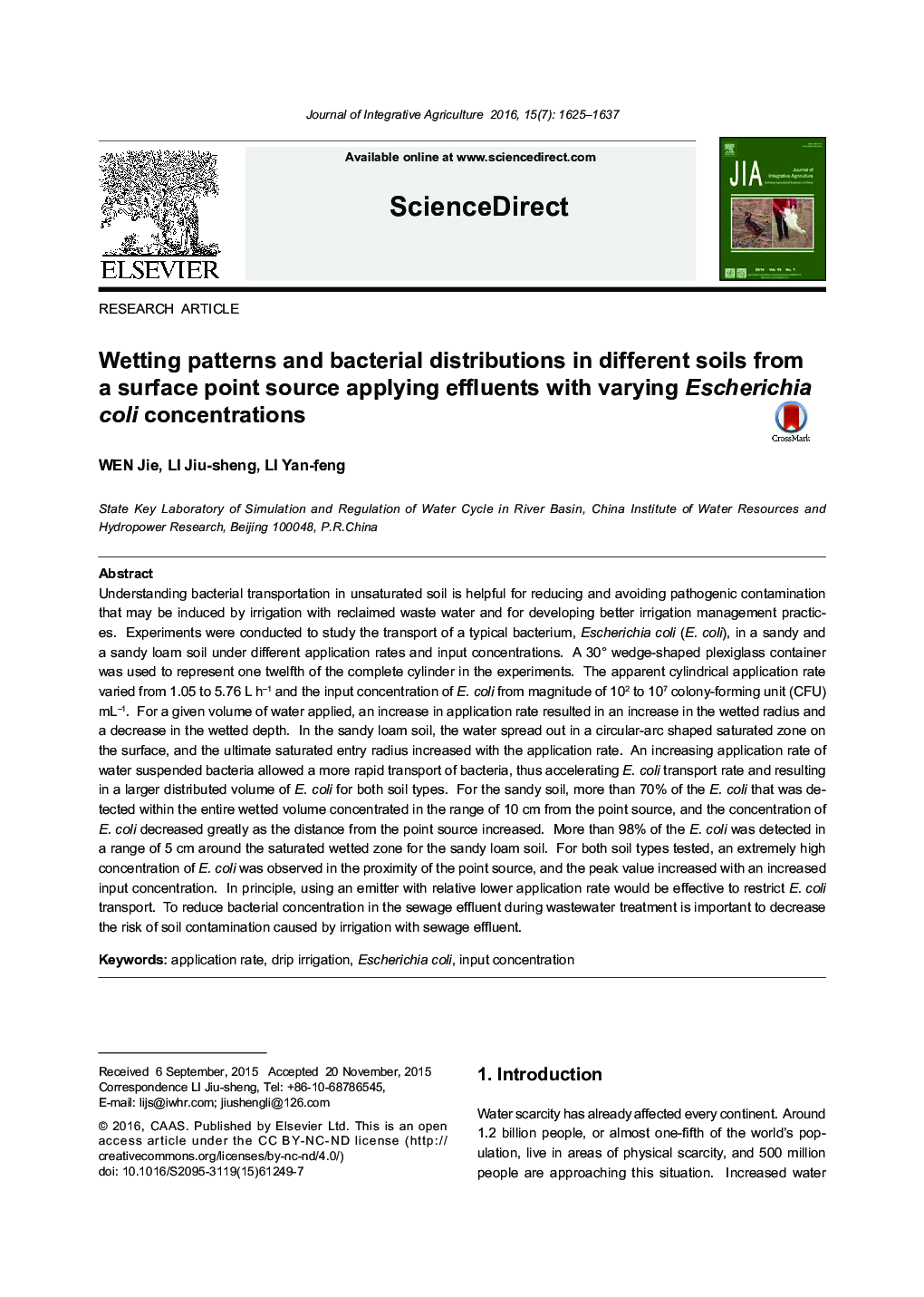| کد مقاله | کد نشریه | سال انتشار | مقاله انگلیسی | نسخه تمام متن |
|---|---|---|---|---|
| 10997801 | 1318699 | 2016 | 13 صفحه PDF | دانلود رایگان |
عنوان انگلیسی مقاله ISI
Wetting patterns and bacterial distributions in different soils from a surface point source applying effluents with varying Escherichia coli concentrations
دانلود مقاله + سفارش ترجمه
دانلود مقاله ISI انگلیسی
رایگان برای ایرانیان
کلمات کلیدی
موضوعات مرتبط
علوم زیستی و بیوفناوری
علوم کشاورزی و بیولوژیک
علوم کشاورزی و بیولوژیک (عمومی)
پیش نمایش صفحه اول مقاله

چکیده انگلیسی
Understanding bacterial transportation in unsaturated soil is helpful for reducing and avoiding pathogenic contamination that may be induced by irrigation with reclaimed waste water and for developing better irrigation management practices. Experiments were conducted to study the transport of a typical bacterium, Escherichia coli (E. coli), in a sandy and a sandy loam soil under different application rates and input concentrations. A 30° wedge-shaped plexiglass container was used to represent one twelfth of the complete cylinder in the experiments. The apparent cylindrical application rate varied from 1.05 to 5.76 L hâ1 and the input concentration of E. coli from magnitude of 102 to 107 colony-forming unit (CFU) mLâ1. For a given volume of water applied, an increase in application rate resulted in an increase in the wetted radius and a decrease in the wetted depth. In the sandy loam soil, the water spread out in a circular-arc shaped saturated zone on the surface, and the ultimate saturated entry radius increased with the application rate. An increasing application rate of water suspended bacteria allowed a more rapid transport of bacteria, thus accelerating E. coli transport rate and resulting in a larger distributed volume of E. coli for both soil types. For the sandy soil, more than 70% of the E. coli that was detected within the entire wetted volume concentrated in the range of 10 cm from the point source, and the concentration of E. coli decreased greatly as the distance from the point source increased. More than 98% of the E. coli was detected in a range of 5 cm around the saturated wetted zone for the sandy loam soil. For both soil types tested, an extremely high concentration of E. coli was observed in the proximity of the point source, and the peak value increased with an increased input concentration. In principle, using an emitter with relative lower application rate would be effective to restrict E. coli transport. To reduce bacterial concentration in the sewage effluent during wastewater treatment is important to decrease the risk of soil contamination caused by irrigation with sewage effluent.
ناشر
Database: Elsevier - ScienceDirect (ساینس دایرکت)
Journal: Journal of Integrative Agriculture - Volume 15, Issue 7, July 2016, Pages 1625-1637
Journal: Journal of Integrative Agriculture - Volume 15, Issue 7, July 2016, Pages 1625-1637
نویسندگان
Jie WEN, Jiu-sheng LI, Yan-feng LI,